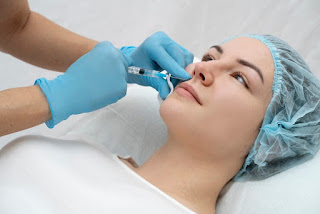Unlocking the Potential of PRP Therapy for Hip Pain
Hip pain can be a pervasive issue affecting people across diverse age groups. It often arises from conditions such as osteoarthritis, bursitis, tendonitis, or injury. While conventional treatments like physical therapy and medications offer relief for many, some individuals experience persistent symptoms. PRP therapy for hip pain emerges as a promising alternative, providing effective and enduring relief for those grappling with hip pain.
Exploring the Dynamics of PRP Therapy
PRP therapy utilizes the patient's blood to create a concentrated solution abundant in platelets, growth factors, and other healing components. The process starts with extracting a small blood sample from the patient, which is then spun in a centrifuge to isolate the platelets. The resultant PRP is then injected directly into the affected area, kickstarting the body's natural healing mechanisms.
Identifying Candidates for PRP Therapy for Hip Pain:
Osteoarthritis Warriors
Osteoarthritis, a degenerative joint ailment frequently affecting the hip joint, can be relieved by PRP therapy. This approach stimulates cartilage regeneration, reduces inflammation, and alleviates pain, especially in patients who have not responded well to conventional treatments.
Athletic Enthusiasts and the Actively Inclined
Active individuals, including athletes prone to hip injuries or conditions like tendonitis or labral tears, can benefit from the accelerated healing provided by PRP therapy. It facilitates a quicker return to activities with enhanced joint functionality.
Persistent Hip Bursitis Battlers
Chronic hip bursitis sufferers grappling with inflammation of the bursa sac can discover relief through PRP therapy. Injections have shown efficacy in reducing inflammation and promoting tissue repair, offering respite for those enduring persistent hip bursitis.
Tendonitis or Tendinopathy Navigators
Individuals dealing with hip tendonitis or tendinopathy, affecting tendons like the iliotibial band or hip flexors, can benefit from PRP therapy. The treatment enhances tendon healing, providing valuable support for those contending with chronic tendon issues.
Conventional Treatment Non-Responders
Patients who have exhausted traditional treatments without significant improvement can explore the regenerative benefits of PRP therapy. This approach addresses the root causes of hip pain, offering a more comprehensive solution than symptom management alone.
Proactive Measures for High-Risk Individuals
Individuals at higher risk due to family history, occupation, or lifestyle factors may consider PRP therapy as a proactive measure. By promoting joint health and reducing inflammation, PRP injections have the potential to mitigate the risk of developing severe hip conditions.
Age-Related Hip Pain
As individuals age, the risk of hip-related issues increases. PRP therapy can be a viable option for seniors experiencing hip pain, providing a regenerative approach that aligns with the body's natural healing processes.
Post-Injury Rehabilitation
Individuals recovering from hip injuries, such as fractures or dislocations, can benefit from PRP therapy as part of their rehabilitation plan. It aids in the healing process, promoting tissue repair and reducing recovery time.
Conclusion
PRP therapy for hip pain stands as an innovative and minimally invasive option with broad applicability. Whether addressing chronic conditions like osteoarthritis or aiding athletes recovering from injuries, PRP therapy offers a regenerative approach to managing hip pain. As the landscape of regenerative medicine evolves, PRP therapy asserts itself as a valuable tool in the holistic strategy for treating and managing hip discomfort.




Comments
Post a Comment